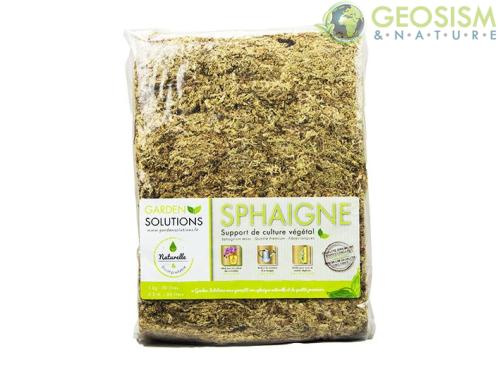Chilean sphagnum fiber (1 kg - 50 lt)
CHILEAN SPHERE IN FIBER (1 kg - 50 lt).
Natural sphagnum, 100% vegetable and biodegradable. Sphagnum is a genus of long-fiber moss that grows in peat bogs and swampy areas.
The known sphagnum peat mainly composed of dead parts of this moss, while the living part (which grows on the surface) called sphagnum. It is collected and dried in Chile, where extensive "eco-compatible" and cutting-edge crops allow to obtain a sterilized product of the highest quality.
In particular, the Sphagnum Subnitens variety is the most used in the field of bonsai, carnivorous plants and orchids, as it allows a rapid regeneration of the cultivation sites. It naturally contains minerals and trace elements that are a source of plant growth.
usable for organic agriculture according to European regulation 834/2007. Culture medium compliant with NF U 44-551.
TECHNICAL FEATURES
Dry matter (MS): 75%;
Organic matter (% MS): 95%;
Conductivity: 5 mS / m;
Water retention capacity: 32%;
Air retention capacity : 67%;
pH: 5.5;
Volume: 1 Kg = 50 lt.
FUNCTIONAL CHARACTERISTICS AND FIELDS OF USE
Sphagnum has as its main feature high water retention, it absorbs up to 20 times of its dry weight (150 g of dry product equals 3 kg moistened). The product must be immersed in water for a few minutes before being used.
In dry and arid situations, its open cell structure guarantees a reserve of water, while in wet or rainy situations, it maintains a high level of oxygenation.
Dried sphagnum has excellent insulating power, in fact widely used for this purpose in arctic regions.
Another aspect of great interest is the high presence of zinc chelated by tropolene, a natural bactericide / bacteriostatic. This component severely limits the development of anaerobic bacteria, the main ones responsible for the decay of organic matter.
The application of a light surface layer of dried and chopped sphagnum has several advantages:
? after repotting, it creates the ideal conditions for a rapid restoration of the root system. Humidity and constant temperature are in fact very important factors for rooting;
? used throughout the growing season, sphagnum acidifies the irrigation water, mitigating the negative effects of limestone. Significantly improves the yield of organic fertilizers and the absorption of iron;
? Sphagnum powder, if mixed with the substrate acidifies the soil and creates the optimal conditions for all essences that live in soils with low pH values (below 7);
? the mild antibacterial action allows the conservation of dry wood buried in the substrate;
? during the summer, it allows greater water autonomy in case of dry climates;
? in winter, on the other hand, it is an excellent "barrier" to the most intense frosts;
? improves and promotes the inoculation of mycorrhiza.











